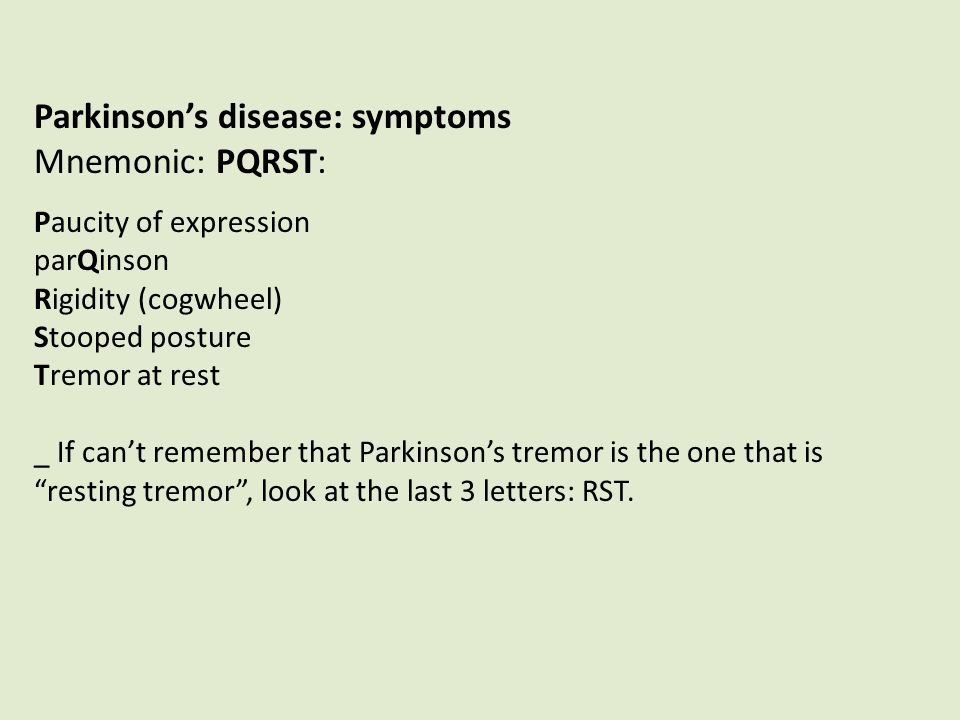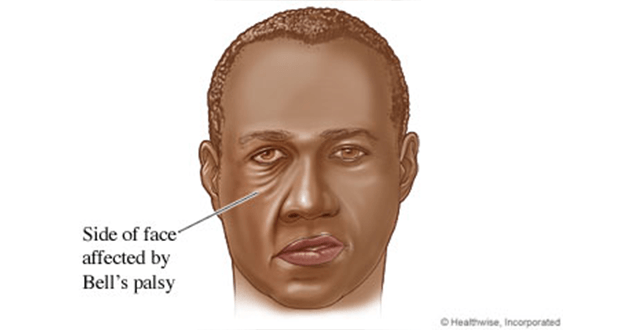Bell's Palsy Symptoms Mnemonic - Usmle Mnemonics 3 Flashcards Quizlet
Although the cause of bell's palsy is uncertain, it is known that inflammation and edema of the facial. Symptoms of bell's palsy can vary from person to person and range in severity from mild weakness to total paralysis. What are the symptoms of bell's palsy? In bell's palsy, the affected nerve becomes inflamed due to injury or damage. Often the virus or infection that causes bell's palsy is so mild that some kids don't ever feel sick. 13 natural treatments for bell's palsy. Symptoms of bell's palsy reflect the paralysis of the affected muscles.
The specific symptoms of bell's palsy are: Bell's palsy is a weakness (paralysis) that affects the nerve fibres that control the muscles of the face. Symptoms of bell's palsy can vary from person to person and range in severity from mild weakness to total paralysis. Symptoms of bell's palsy usually improve on their own within a few months. Clinically, bell's palsy is primarily characterized by the dysfunction of peripheral seventh cranial nerve (i.e. Sir charles bell first described the condition in 1829 as follows: The most common symptom is sudden weakness of one side of the face. The main symptom is weakness or paralysis of one side of the face. Its incidence is about 20 cases per 100,000 persons.

Sir charles bell first described the condition in 1829 as follows:
Bell's palsy affects men and women equally. Most researchers think that it is caused by infections like the common cold virus or meningitis. The main symptom is muscle weakness on one side of the face, causing the face to droop. Symptoms of bell's palsy can vary from person to person and range in severity from mild weakness to total paralysis. The most common symptom is sudden weakness of one side of the face. The left and right sides of the face are affected with equal. The classic sign of the disease is the involvement of only one side of the face with a sudden onset. We look at bell's palsy. Usually, symptoms of bell's palsy begin gradually and peak in 48 hours. Other symptoms may include drooping of the mouth, drooling, inability to close eye (causing dryness of the.
Bell's palsy can be a frightening experience, appearing suddenly with symptoms that cause many people to think they're having a stroke. Usually, symptoms of bell's palsy begin gradually and peak in 48 hours. Symptoms of bell's palsy typically show up suddenly and without warning. It is usually unilateral in nature, that is, it affects the muscles on any one side of the face. Symptoms of bell's palsy reflect the paralysis of the affected muscles. It typically occurs in people between the ages of 15 and 60. Bell's palsy itself is not life threatening and is rarely serious.

Some people have mild weakness in the face.
The main symptom is weakness or paralysis of one side of the face. Others say that sounds seem much louder than normal in the days before they see any other symptoms. It is caused by a damaged these are the most common symptoms of bell's palsy: Signs and symptoms of bell's palsy. Symptoms of bell's palsy usually improve on their own within a few months. The disease is named after charles bell, the doctor who first described the condition. Bell's palsy affects 1 in 5,000 people each year in the united states, and 1 out of 70 throughout a lifetime. Though it can be alarming, it typically goes away in a matter of weeks. The most common symptom is sudden weakness of one side of the face. Bell's palsy affects both men and women, most often between ages 15 and 45.
It is usually unilateral in nature, that is, it affects the muscles on any one side of the face. The most common symptom is sudden weakness of one side of the face. Symptoms can vary from mild to severe and often include muscle twitching and weakness, or total loss of the ability to move one (or rarely both) sides of the face. It is caused by a damaged these are the most common symptoms of bell's palsy: Symptoms can start suddenly and be distressing. What are the symptoms of bell's palsy? Some people have mild weakness in the face.

The main symptom is weakness or paralysis of one side of the face.
What are the symptoms of bell's palsy? Its incidence is about 20 cases per 100,000 persons. We look at bell's palsy. Although the cause of bell's palsy is uncertain, it is known that inflammation and edema of the facial. Bell's palsy affects 1 in 5,000 people each year in the united states, and 1 out of 70 throughout a lifetime. Around 40,000 people in the u.s. It is vital to rule out potentially serious or fatal conditions. Signs and symptoms of bell's palsy. Symptoms of bell's palsy can vary from person to person and range in severity from mild weakness to total paralysis. Bell's palsy can be a frightening experience, appearing suddenly with symptoms that cause many people to think they're having a stroke. In reality, stroke symptoms are quite different, and bell's palsy is a comparatively harmless condition that usually clears up without treatment. The weakness normally develops quickly, over a few hours or so. Symptoms of bell's palsy usually improve on their own within a few months. 13 natural treatments for bell's palsy. Usually, symptoms of bell's palsy begin gradually and peak in 48 hours.
Bell's palsy affects 1 in 5,000 people each year in the united states, and 1 out of 70 throughout a lifetime bell's palsy symptoms. Often the virus or infection that causes bell's palsy is so mild that some kids don't ever feel sick.

However, bell's palsy symptoms can be very similar to stroke.

Treatment and recovery depend on the underlying condition.

Symptoms can vary from mild to severe and often include muscle twitching and weakness, or total loss of the ability to move one (or rarely both) sides of the face.

Symptoms of bell's palsy can vary from person to person and range in severity from mild weakness to total paralysis.

The disease is named after charles bell, the doctor who first described the condition.

The specific symptoms of bell's palsy are:

Bell's palsy can be a frightening experience, appearing suddenly with symptoms that cause many people to think they're having a stroke.

Sir charles bell first described the condition in 1829 as follows:

Bell's palsy is a weakness (paralysis) that affects the nerve fibres that control the muscles of the face.

Bell's palsy diagnosis & treatment.

Other symptoms may include drooping of the mouth, drooling, inability to close eye (causing dryness of the.

The classic sign of the disease is the involvement of only one side of the face with a sudden onset.

Bell's palsy diagnosis & treatment.

Though symptoms range in severity and duration, most cases improve and resolve after a few weeks.

Though symptoms range in severity and duration, most cases improve and resolve after a few weeks.

Bell's palsy affects 1 in 5,000 people each year in the united states, and 1 out of 70 throughout a lifetime.

Clinically, bell's palsy is primarily characterized by the dysfunction of peripheral seventh cranial nerve (i.e.

What are the symptoms of bell's palsy?

Though it can be alarming, it typically goes away in a matter of weeks.

Symptoms can vary from mild to severe and often include muscle twitching and weakness, or total loss of the ability to move one (or rarely both) sides of the face.

It is caused by a damaged these are the most common symptoms of bell's palsy:

Its incidence is about 20 cases per 100,000 persons.

Though symptoms range in severity and duration, most cases improve and resolve after a few weeks.

Often the virus or infection that causes bell's palsy is so mild that some kids don't ever feel sick.

Signs and symptoms of bell's palsy.
Early symptoms include changed sensation in a portion of the face, pain in or around the ear, increased or decreased hearing, and impaired taste.

Symptoms can vary from mild to severe and often include muscle twitching and weakness, or total loss of the ability to move one (or rarely both) sides of the face.

As the condition progresses, a person typically has trouble closing his or her.

You might also notice the following things before the onset of bell's palsy (remember that these symptoms will probably only happen on one side of your face)

Bell's palsy is a temporary weakness or paralysis of the muscles on one side of the face.

The classic sign of the disease is the involvement of only one side of the face with a sudden onset.

Who might have bell's palsy?
Posting Komentar untuk "Bell's Palsy Symptoms Mnemonic - Usmle Mnemonics 3 Flashcards Quizlet"